










Otterbein's first-ever zine it's first We take
iur Kate H anby I f nvY\. Otterbein's first femalegraduate - class of 1858


Otterbein was first college to admit women to all levels aF' study , -t4 first to students of color first to hire
faculty ( -
Claire Augustine
Afton G ladman
Randi Hopkins
Kristina Kirkland
Brianna McPherson
Kailey Parker
Sierra See advisers
Sarah Fatherly
Amy Johnson special thanks
Emily Bonette for the cover design
Kate is sponsored by the Otterbein Women's Studies Department




by BriannaMcPherson
When I was younger, among many things, I longed to be smarter. I always lagged just a little bit behind in most ofmy classes. School used to come so easily for my best friend throughout my public school years. She was the smart girl, I was the "out there" writer. It was an easy identity to fall into, and I was content with it...most of the time.

It wasn't until I started here at Otterbein that I ever thought I was particularly smart. The professors here both challenged and affirmed me and I began to grow as a student and creative writer. This sort of identity shift took me a while to figure out. I wasn't just some goofy, creative kid anymore. There was a reasoning, thinking, intellectual persona inside of me just waiting to come out and flourish. Long story short, with time I have become more comfortable in this role of student/writer/scholar.
This is just one of the reasons why the staff of Kate chose the theme of The Intellectual Woman for the 2009 issue. Unfortunately, there are few women, especially young women, who want to take up the label of intelligent, let alone intellectual. Since the staff of Kate are just a sampling of the intellectual women on Otterbein's campus, we wanted to invite others to


write on this topic.
You may notice that not all the pieces featured in this issue are "about" intellectual women. To encourage diversity in our content, not only are we discussing intellectual women, but we are honoring the intellectual work created by the women of Otterbein. This issue is full of beautiful artwork, creative writing and intellectual prose, all created by female students right here on Otterbein' s campus.
On behalf of the Kate staff, I hope you enjoy our 2009 edition!

§HJE runs to class to see the new
But they see not what She knew She doesn't brush or comb her hair
They say SHE does it as a dare SHE doesn't bother with cosmetics
They stare and say that SHE's pathetic In the end SHE is in the right For she won her owmi fight SHE made the grades and got the job

Never did SHE let the1m see her sob SHE doesn't 1meed lipstick to be a woman SHE has more strength than a true man They said her smarts wouldn't get her fair But now they see her as a star SHE didn't ask for their approval

And didn't care for their refusal SHE's got the brains and the heart SHE's at woman not a body part ...


The Good Body. Eve Ensler Random House, New York, 2005. 87 pgs.
Even Ensler is concerned. She is concerned about her stomach. You're probably wondering if she has some terrible disease, a form of irritable bowel, perhaps. Maybe stomach ulcers? No . Not the health of her stomach, how the way her stomach looks is perceived by herself and society at large . In her most recent work, The Good Body, Ensler challenges the concept of womanhood in the twenty-first century. She address questions such as how a woman is "supposed" to look, how they are "expected" to act, and what women "should" be thinking about. While some men may be able to appreciate this as a literary work, this book is mostly beneficial for every girl who has ever had insecurities about her body and is looking for a voice to qualm her dears that for any reason the size, shape or color of her stomach lessens her value as a human being.



Ensler is a radical feminist. In the beginnings of her career as a \ writer, she was not yet concerned about her stomach, but she was worried for vaginas. She was worried that vaginas were being treated unfairly and that nobody was sticking up for them. She then wrote a very famous play called The Vagina Monologues. The monologues changed the face of feminist . They gave voice to a word that many people feared to say and shed lighton 4



terrible acts of violence that have been committed against vaginas for a very long time. They propelled vaginas into the limelight, and after accomplishing this task, Ensler realized that another part of her body was becoming problematic to her. This part of her body was, of course, her stomach . It was not flat, she always struggled with the size of her stomach, that in order to be "good" as she says, she should have flat washboard abs. She decided that if her stomach was smaller, she would be a better person. Of course, this makes one question why the size of one's stomach is more important than her actions or her thoughts. This is the question that Ensler set out to answer, and she does a pretty good job getting at it from multiple angles.
This book does not contain a unified plot, per se, it is rather a collection of vignettes, short stories, and reflections that the author needs us to hear. These elements are tied together by the unifying theme of the woman's body. Ensler creates a delightful montage of interesting characters in order to see this theme through the eyes of women of different ages, races, and lifestyles.
Ensler uses artistic freedom with her characters. Many of them are based on real people and some of them are completely fictional. You can tell that Ensler injects her own voice onto these character simply because her voice is so strong throughout the entire piece that it is hard to separate Ensler from her characters. Another reason why this might be so is because she seems so deeply invested and closely connected to the people she "interviews." It really isn't an interview, however-it is merely a conversa-
•

n with another woman about her bodily eccentricities. One of her characters, Bernice, is an overweight African-American teenager. She is Ensler makes her identifiable to girls who are overweight by injecting the figure of the "Skinny Bitch", the girls who have all the looks and none of the personality. Big girls can identify with this because in every store they enter, there is a Skinny Bitch read and willing to humiliate you by grabbing the stepladder from the back to get down that size twelve from the very top portion of the jean wall. These are the jeans that the Skinny Bitches who regularly enter the store do not need to reach, so they are left on the top for those few brave souls who dare to venture into Skinny Bitch territory. This, this character is extremely effective, especially to the girl who has had the exact same thought. Why do fat girls have to "do everything double"?

One of the most interesting juxtapositions that this book offers is the difference between the thirty five year old model, Tiffany, and Priya, a middle aged Indian woman. The two have very different stories to tell. Tiffany married her plastic surgeon ( enough said), and Priya could not understand what Ensler meant by saying that she don't love her body for all it was. Tiffany's husband was constantly on the hunt to find new ways to torture is wife's body into difference tessellations while Priya's husband got upset that she had started working out. "Priya," her husband says, "your jadhi (fat) is my personal country. If you were to lose your jadhi, I'd be a sorry refugee." Here she points out the difference in culture that is shaping the way girls dethis development.
velop self-esteem and also the role".: men play in



husband thinks that a wife is fine the way she is, then the woman has high self-esteem. Because somebody accepts her for who she is physically. Ensler slips in the roles of her own "partner" in order to even the score of this dichotomy. While her partner tells her that she is beautiful the way she is, she cannon seem to accept the compliment, as if her partner is lying to her as a part of some grand scheme to patronize her. Why, Ensler, intimates, is I that we let others dictate the way that we feel about our bodies? Why can't we define for ourselves what is beautiful and find someone who is accepting of that?
Essentially each piece in this work is fantastically feminist and inspiring in one way or another. The book is easy to read and extremely quick. One warning abput the book: once you pick it up, you will not be able to put it down. It is completely engrossing and absolutely fabulously written. I believe that every woman should experience The Good Body. It will lift you off your feet and set you down a more confident and inspired human being.

"Personally, I think that sexy is keeping yourself mysterious -Stevie Nicks



Autobiography of a Face. Lucy Grealy. New York: HarperPerennial, 1994. 223.
Truth & Beauty: A Friendship. Ann Patchett. New York: Perennial, 2004. 257.
When I first heard about Autobiography of a Face, I was excited to read a thorough analysis of human body image. With Truth & Beauty, I thought I would find Patchett angry at her friend (Lucy Grealy) for killing herself, but sympathetic of her body image issues. But Grealy put most of her effort in describing the radiation and chemotherapy of her cancer treatment, which almost overrides her issues of body image. Between the lines, readers will find that Grealy has built up a shell to hide her continuing suffering of her face. Patchett fills in the holes that Grealy leaves open in Autobiography of a Face, giving explicit details of Grealy's suffering of her Grealy, because Patchett gives readers a more thorough exploration of her










Grealy and Patchett were both accepted into the Iowa Writer's
Workshop, where the two lived together. While Grealy was at the Bunting Institute, she wrote an essay for the Harper, which was the tip of the iceberg •
of what would be Autobiography of a Face. She received a book contract and a fellowship at the Fine Arts Work Center in Provincetown. It was dur-
ing and right after the fellowship that she wrote and completed Autobiogra

phy of a Face. Truth & Beauty also gives a glimpse of both author's writing style . Patchett was a writer who put herself on schedules, a writer who was
comfortable in solitude and felt a huge sense of responsibility to get projects
done. Grealy on the other hand hated to be alone and would constantly find ways to interact with big groups of people, whether it was going to bars or

throwing a "Congratulations, You've Wasted Half your Fellowship" party
(Patchett 115). As Patchett describes, "I had never in my life known a writer •
who enjoyed the actual act of writing less than Lucy" (Patchett 112). Truth
& Beauty was published in 2004, two years after the death of Grealy by acci-
dental drug overdose by heroin
Autobiography of a Face describes Grealy at the age of nine receiv-
ing her diagnosis with a cancer of the jaw called Ewing's sarcoma, which in
the book is described to have a 5% survival rate . The book describes how the shell that she lived behind was created, with vivid accounts of Grealy as a
child teaching herself not to cry during the chemo injections. One word that pops out in the book is the word 'special'. Grealy describes how at first the attention she received by having cancer was seen as a gift, an excuse to get out of school. Grealy perfected being the perfect patient. Grealy shows us how since she was taunted in her school years, she becomes close to horses. As she describes the relationship with her horse, Swinger, "There was not one part of his body I could not touch, not one part of his personality I did not know at least as well as my own" (158). It is almost erotic how she says that she can touch whatever part she wants. The horse has a personality and is the obiect ofGrealy's first exposure to grief when the horse dies.


Truth and Beauty goes through Patchett and Grealy's relationship from their time in Iowa all the way to her death . Patchett uses the metaphor of the ant and the grasshopper, Patchett as the hard working ant who is overshadowed by Grealy the outgoing grasshopper. Interjected with Patchett's narrative are Grealy's letters to Patchett throughout the years, especially during the time of an extensive and long reconstructive surgery on her face in Scotland. Since both were writers, Patchett explores the life of a writer, of being special for herself, especially when she finds herself recently divorced ' without a teaching job, and waitressing at Friday's. During a visit to Scotland to visit Grealy, Patchett starts to get down at her present situation, and
Grealy responds with a simple "Oh, you'll be fine." She describes her reaction as such, "I had spent plenty of time on her sadness and now I wanted a minute for my own" (Patchett 72). Grealy responds by saying that Patchett in her life will always be fine. This scene shows the idea of predestination, that Patchett is destined to make her life work out while Grealy is pre-destined to have a life of wild nights.







Autobiography of a Face will always be a powerful book, because the author survived such intensive physical and emotional pain. But Grealy ends the book at a random cafe, a story much unfinished. Granted, she still was living when this book ended. Grealy rarely calls herself out on her faults. Maybe it is because this book was marketed as an autobiography, not a piece of creative nonfiction, but it is incredibly important in creative nonfiction to as an author express doubt in ourselves. This gives the author credibility, and we don't get that from Grealy. Instead, we rely on the fact that she suffered.
Truth & Beauty is a thorough memoir, giving fans of Autobiography of a Face an inside look of the life of Grealy. Patchett experiments with form, interjecting her prose with the letters ofGrealy, so a reader has to switch between prose and epistolary writing. As far as disappointment with the text, I have to reference Suellen Grealy. Suellen was incredibly upset


that Patchett, in her eyes, had stepped all over her grieving process. Suellen can accept her sister telling hard truths, but she can't accept hearing the truth from a person who as she says was more of a sister than she was. The story of the ant seems much more touching than the story of the grasshopper. The grasshopper flies herself into oblivion, ending in a downward spiral of drugs, including heroin, the drug that killed her. The ant was humbled throughout 1 her writing life and even though she was winning fellowships and awards almost as much as Grealy, felt she was under Grealy's shadow a lot of the time. I have to recommend this book for any aspiring writer, if only to get an inside look of what is very likely to come in their lives.







of space we force to be gone with books or sandals or his favorite show. My
IDo you remember that one night? You had followed me to visit himwith his pubic beard and gallons of words. We are walking, with you behind us, and you whisper to me. I am so exhaustedfrom listening I and smiling and meeting those; all of whom I will forget. I am so tired and you whisper to me. Being caught
by your Rabbit eyes and the curve of your body around ever changing edges, I I am struck still in the ocean \

and my whole body washes and I realize how fast I'm running even in my stationary position. I'm running and these colors are
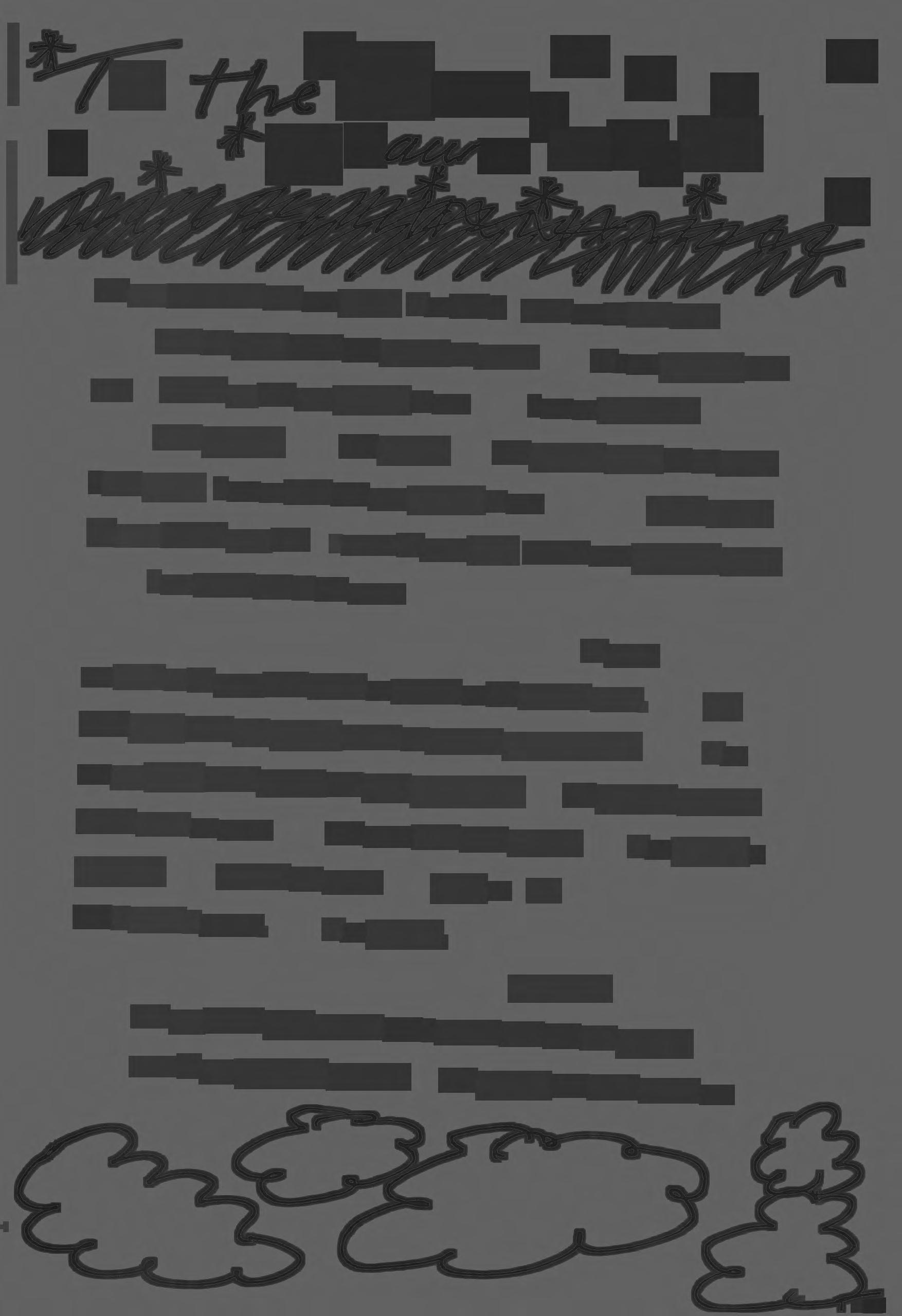
Ihand drops from his, leaving colors of German Expressionism. You are my bright relief against this rigid interchange, the diagonal shadows which make no sense and must have been painted. You whisper a Question, without the words I being audible. But it doesn't matter. You whisper,
leaving me connected, still, to still painting my trail, and, yet, it's alwhere I have left. Your colors are never the same
It's you who knows my past and my secrets, alone in the ways you.
car; when I used to leave his place, late, the 'he' I am trying to escape. But, like escaping you, it's impossible. Instead of pressing my face to this awkward desperation, I should just crawl into your curves from those nights of dimensions and watch down on myself that you knew.
I would use your face as a mask and at the lost times and people I've been who scream at.myself; scream
I will ask you what those could never have known what I know now . They are hidden in your smirk so far _ things are, just to be sure.
in Then, everyone knew except me. away, no one else can see but,


One Secret Thing. Sharon Olds. New York: Alfred A Knopf, 2008. 98 pages

One Secret Thing is Sharon Olds ninth collection of poems and the final piece to her collection of familial poetry. Olds uses the lyrical harmony her readers have come to expect to touch on war, love, loss and countless other human realities she shamelessly poeticizes. Although Olds sporadically reminds us of the humor she is capable of, it is clear this collection of poetry was written for more personal reasons: the closure of her abusive mother's death.



One Secret Thing is divided into five parts with the first part a pub- lic protest to war. This section gives us dramatic visuals like legless fighter pilots, frozen dead limbs peeking out from tarps, and body sniffers, the ones who smell the wreckage for living people. In this section Olds avoids specif- ics of possible terrains to allow for general thoughts of war. She doesn't allow her public protest to narrow in scope with each new poem. Freezing bodies, free shoes for children, fighter pilots, these subjects vary so much they can be placed around the globe in history and present day. Although this section is a powerful stand to the atrocity of war and is a great example of the


inherent activist in Sharon Olds, it seems somewhat out of place in relation to
the rest of the collection
The second part of the collection Cannery begins Olds more personal account of history, growing up, and most important throughout the rest of the collection, her mother. From detailed accounts of night time tuck-ins, the feel of her first bra, and the behavior chart her tantrums were graphed on, Olds memory seems crystal clear. She describes her childhood through so many odd little outlets that we start to understand what kind of child lives and remembers this way. In this chapter we are introduced to her mother who's maternal side is put into question with poems like Money that suggest Olds endured quite a bit of abuse from her mothers heavy hand. Also, in the poem Freezer Olds bizarrely explains how her mother used her for support, I while killing her in the mean time. To achieve this Olds explains her mother as a cannibalist who could only focus on fattening her up before she eventually killed and froze her, the freezing being the deadening of emotion
With part three comes a lighter more likeable side of Olds that is much more characteristic of her previous work because of its unembarrassed candor. This chapter is appropriately titled Umbilicus with many poems that deal with the shape and parts of the female body, her daughter, and once again, her mother as the common thread. In this chapter of the book we


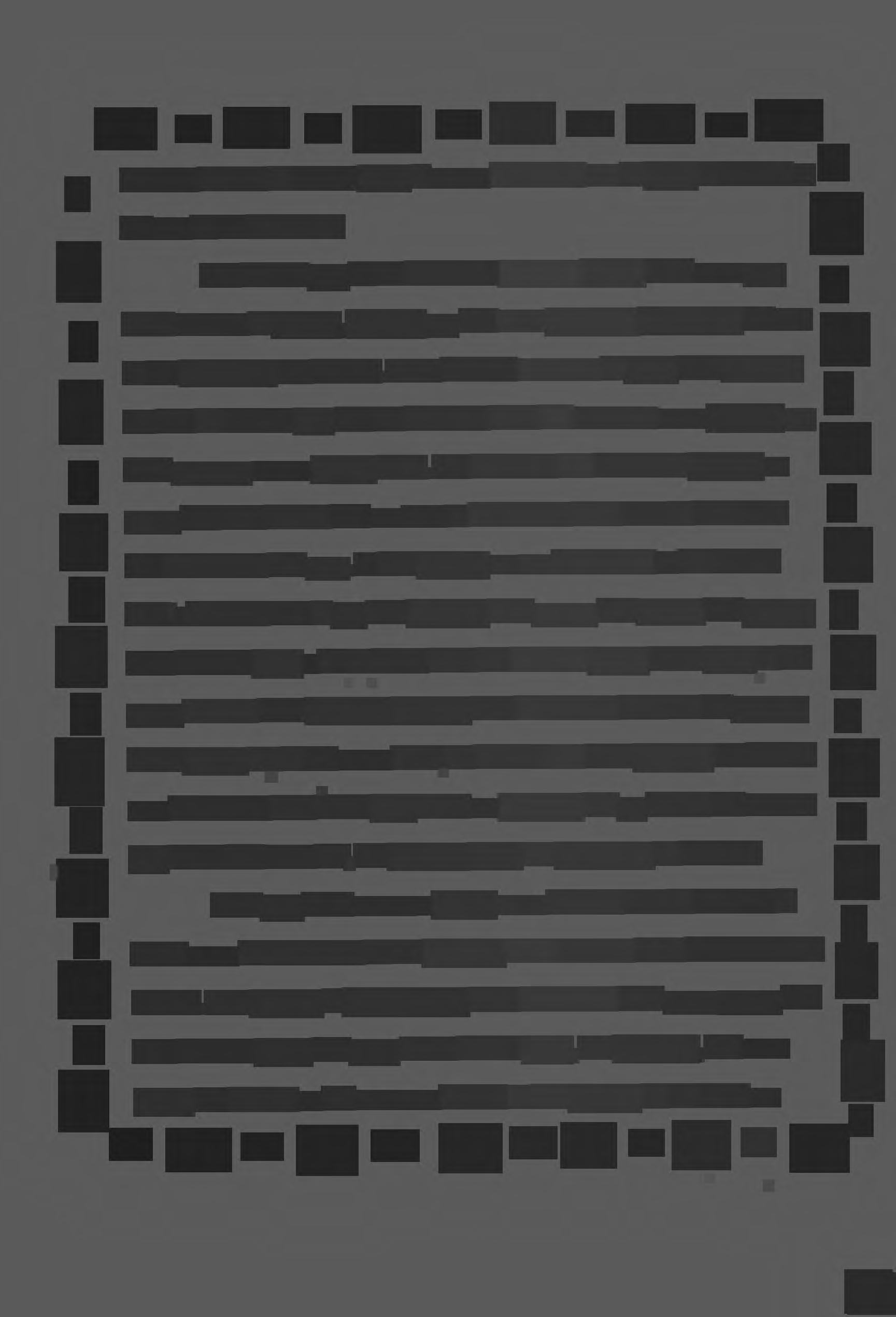
realize how much Olds is focusing on women and what we think of our fe male bodies. Home Ee has to be the best example of this brash energy. This poem seems to fly off the page with mentions of menstruation, sperm, and birth control all in a violent removal of a diaphragm scene. It's hard not to suspect that this is what seasoned readers of Olds poetry are looking for, unembarrassed reality made beautiful through ownership.
Part four is titled Cassiopia and with 8 out of 8 poems in this section having mention of her mother, Cassiopia may as well be her name. This chapter seems to be a dedication to Olds adult relationship with her mother. Unlike the poems of abuse in Umbilicus, Olds shares with us many times she can remember in her not so distant past when her mother had reactions that were completely unfitting for the scene or issue unfolding. She describes her mother as "made of some other material, wax or ivory or marble" (71.) In The Ecstatic Olds finally manages to infuse humor into a poem about her mother. The Ecstatic is actually her mother on anti-depressants and how "adorable" she was explaining her Medic-Alert transmitter. Olds ends this poem so strongly with the final lines of"Oh I have my mother on a leash," the leash being both the transmitter around her neck, as well as the antidepressants she wished she could have been slipping in her food for years. poem wo,ks for many reasons, but mainly because it blends the light


Part 5, titled One Secret Thing invites us into the emotions Olds felt as her mothers life came to a close. The actual poem, One Secret Thing describes a secret moment she had with her mother at the very end of her life, when she rubbed ointment all around her mothers mouth in the hospital and feeling the disgusting sensation she felt being inside her mothers mouth, she states, "I did not want to touch inside her, the act was an escape, my last chance to free myself' (88.) This scene accurately portrays Sharon Olds role in her mothers life, she was simply there, not with sentiment, but because it was the right thing to do.
The ideal reader for One Secret Thing is any woman who has ever examined the dynamics of her relationship with her mother and questioned how that might evolve with time. I saw woman because Olds relies so heavily on emotions derived from actions only the female body is capable. I do not suggest this book for those who don't freely sympathize because it can be easy to feel as though she is harping on her past. This book is written for someone who understands Olds story either from reading her previous work, or through experiencing a compassionless childhood much like her own. I also warn readers to look further than the first chapter on war for a more clear depiction of what the collection is about. Even though Olds lightly cov-




ers so many topics the resonating and final note is the death of her mother.
Anyone to lose a parent, whether in sorrow or numbness, can relate to her message that sometimes death brings more than the deceased peace.


of Sharon Olds from Poets.org© David Bartolomi






While race for President of the United States was on the minds of seemingly the entire world, Washington wasn't the only one searching for a new president. Here in Westerville, Otterbein was also on the hunt. C. Brent DeVore spent 25 years at Otterbein and was respected by many, leaving very big shoes to fill. Students wanted someone equally deserving of their respect and those on the presidential search panel didn't approach the decision lightly.
Not only did we get a respectable, qualified, future president, we also got an intelligent and insightful woman- the first woman ever to be president at Otterbein. I had the pleasure of interviewing our very own "president-elect," Kathy Krendl, about her role as an intellectual woman in modern times.
"I am honored by the opportunity to lead Otterbein and to serve as its first woman president. Otterbein's history and its commitment to inclusiveness and diversity make the position especially meaningful," said Krendl.



"The early photographs of the faculty with one woman among several men send a powerful message to today's students. As president, it is my hope to
continue to support and extend that mission of inclusiveness."
Krendl said the foundation of an intellectual life is a liberal arts education- and I couldn't agree more. According to her, a grounding in the liberal arts provides one with the tools to translate intellectual engagement into action and at Otterbein, action is key to undergraduate education.

Krendl attributes her own intellectual development to constantly being surrounded by books.
"Reading was a favorite activity in my home," said Krendl.
Along with reading, writing was also of interest to Krendl, apparent by her multiple degrees in English, Journalism and Communication, and various published works.
One of the most interesting things about Krendl is that she interviewed Gloria Steinem for a public television show. Way to make a girl jealous!
As a journalist and advocate for women, I can 't help but idolize Gloria Steinem. Krendl, and I admire her because of her humble background in Toledo, Ohio and all that she was able to overcome to become an important voice for women. Not only is Steinem extremely accomplished professionally (she is an award-winning journalist, author and editor), she also founded a multitude of women advocacy groups and helped create "Take Our




"Though it may still remain a bit more challenging for an individual woman to demonstrate her capabilities and intellectual prowess, there are also more 'cracks in the glass ceiling,"' said Krendl. "Breaking through those cracks requires determination, perseverance and intelligence. My hope is that the Otterbein experience helps to build that determination, reinforce that perseverance, and develop and strengthen intellectual skills."
What a great analogy! Dr. Krendl's doing her part breaking barriers and proving the worth of intellectual women- what are you doing to break through the cracks? Though our days in the kitchen are generally behind us, there ' s still work to be done. As Krendl's leadership grows nearer, let's show her that her perseverance will not go to waste.

Power, Duty and Love ofa Country: Defining the Role of the First Lady
"Being the First Lady is the hardest unpaid job in the world," declared Pat Nixon in March of 1972. First Ladies are not elected officially, yet they are expected to fulfill certain unwritten duties and expectations. They are faced with speaking in front of thousands, supporting their husbands through rough times publicly and privately, and more recently, tackling the country's domestic issues, all the while knowing that the country is watching their every move. The role of the President has stayed consistent because his duties were defined in the Constitution; however the role of the First Lady has not. It is not an elected position and is not defined in any piece of legislation which means the actual role of the First Lady is able to change with each woman and First Gentleman if a woman is elected President, who holds the position. The role of the first lady has changed over time from private hostess to a woman who takes on domestic and international crisis because of the position's relationship with society's perception of femininity.
Modem First Ladies are suppose to take up a cause or pet project while in office. Nancy Reagan was highly criticized for not doing enough in
• her role as America's first lady, being called by many "Queen Nancy". As a result, Reagan launched one of the most recognizable anti-drug campaigns Her "Just say no" slogan in still used is schools across the United States today. Reagan traveled almost 250,000 miles across the country, appeared on multiple news talk shows, and even campaigned internationally against drug use by traveling to the Vatican to meet with Pope John Paul II.

It is important to note that although these woman champion causes, the projects that they picked are domestic or feminine in some way, suggesting that they are still confined to the constraints of traditional gender roles. President Nixon, who restricted the role of the first lady while he was in office, claimed "'i[f] the wife comes through as being too strong and too intelligent it makes the husband look like a wimp."' This ideology of Nixon was also shared by society. If a first lady tried to take on a non-traditionally feminine issue such as war or genocide it could be seen as the president not doing his job . Robert Watson, scholar of political science, claims that the first lady's causes have to be feminine because she is forced to balance the image of a traditional and modem woman. He also agrees with Nixon that she has to be careful not to overstep her boundaries by appearing too strong which leads to a fall in the public's opinion of her husband. This is demonstrated by





the choices these ladies made. Betty Ford worked to improve conditions for 4.•

,handicapped children. Rosalyn Carter chose to tackle mental health because
fher experiences with the people she met on the campaign trail. Both Barbara and Laura Bush decided to work on increasing literacy in America.Even Hillary Clinton, who is considered to have more masculine qualities then because of her own professional career and close policy making position with her husband by scholars such as Watson and Gutin, chose health care and child advocacy. While all of these causes can be considered important and even heroic they can all be traced back to roles assigned or associated with femininity.
One safe project First Ladies have taken up throughout history which has become one of the unofficial duties, is the renovation of the White House. It fits in with the very traditional role of taking care of the home.
Dolley Madison catapulted into this role by giving members of Congress a tour of the White House so that they could see the need for remodeling. Madison's scheming worked and Congress set up the Presidential Furniture Fund and appropriated $20,000, although she only used $12,669.31. Madison's influence over Congress shows how much power her position can hold despite being considered a role of not much political importance. Madison set the tone for her predecessors by making the While House a place of elegance. dent. It is a position that is very much tied to femininity and those that dare -
a. I I I I I
The most famous restorer of the White House was unarguably Jackie Kennedy. Kennedy, like Reagan, was criticized by the press and public for not having a "cause" and for her lavish expensive taste in clothes, wine, and other material items Kennedy though portraying a very feminine and traditional role of the First Lady, illustrated the expansion of power with her creation of committees and increase in public spotlight of the first lady position through modem technology. She was also a First Lady who truly embraced the traditional roles of femininity demonstrated by her dedication to improving America's home. Kennedy took this project very seriously and created a White House Fine Arts Committee and White House Historical Association. To help pay for the all renovations she wrote The White House: A Historic Guide. Tired of all the mismatched items left from previous administrations Kennedy went though and cataloged every item and then used only what passed her standard of quality claiming "'Everything in the White House must have a reason for being there. It would be a sacrilege merely to 'redecorate'-a work I hate. It must be restored, and that has nothing to do with 'decoration.' That is a question of scholarship."' She also gave a tour of the White House on prime time television to the American public which later went on to win an Emmy.


The role of the First Lady of the United States has been overlooked and underestimated by society. They are the only members of the executive branch not elected or appointed and have the closest relationship to the presi:

dent to challenge that influence have been met with heavy disapproval from the press and American public. Their actions affect the public's opinion of their husbands so they must be careful which battles they choose to fight.
However, those that have challenged the standard have pushed the door open a little more each time allowing for First Ladies to increase their public duties from not just simply being America's hostess but also taking on domestic and international crisis. Despite not always being a position that is desired, these ladies, especially in the 20 th century, have challenged and broke through gender roles set by a patriarchical society.
Allgor, Catherine. Parlor Politics: In Which the Ladies of Washington Help Build a City and a Government. Charlottesville, VA: University of Virginia Press, 2000.

Anderson, Alice E., and Hadley V. Baxendale, Behind Every Successful President: The Hidden Power and Influence of America's First Ladies. New York: S.P.I. Books, 1992.
Anderson, Karrin Vas by, "The First Lady: A Site of' American Womanhood,"' in Leading Ladies of the White House: Communication Strategies of Notable \ Twentieth CenturyFirst Ladies, ed. Molly Meijer Wertheimer, 1-15. Lanham, MD: Rowman and Littlefield Publishers Inc, 2005. Blair, Diane M. and Shawn J. Parry-Giles. "Rosalynn Carter: Crafting a Presidential Partnership Rhetorically," in Leading Ladies of the White House : Communication Strategies ofNotable Twentieth Century First Ladies, ed. Molly Meijer . Wertheimer, 140-163. Lanham, MD: Rowman and Littlefield Publishers Inc, 2005.

Caroli, Betty Boyd. First Ladies. Oxford: Oxford University Press, 1987.

Gutin, Myra, "Hillary Rod.ham Clinton," in American First Ladies : Their Lives and Legacies, ed. Lewis L. Gould, 2nd ed., 425-438. New York: Routledge, 2001.
Muir, Janette Kenner, and Mary Mooney, "Nancy Reagan: Leading Lady, Supporting .ti ,. Actress, of Bit Player," in Leading Ladies of the White House: Com - munication Strategies ofNotable Twentieth Century First Ladies, ed. Molly Meijer

lishers Wertheimer, 164-186. Lanham, MD: Rowman and Littlefield Pub, 1 2005.


"Jacqueline Kennedy: The Rhetorical Construction of Leading Ladies of the White House: Communication Strategies of Notable
Twentieth Century First Ladies, ed. Molly Meijer Wertheimer, i 70. Lanham, MD: Rowman and Littlefield Publishers Inc, 2005. Nixon, Pat. Interview in Monrovia, Liberia, March 15, 1972, appearing in First Lady
0 ) Quotation Book, edited by William 0. Foss, 96. New York: cade Books, 1996 .

Watson, Robert P. The Presidents' Wives: Reassessing the Office of the First Lady.
Boulder, CO: Lynne Reinner Publishers, 2000. Wertheimer, Molly Meijer, "Laura Bush: Using the 'Magic of Words' to Educate and Advocate," in Leading Ladies of the White House: Communication Strategies of Notable Twentieth Century First Ladies, ed. Molly Meijer Wertheimer, 235-270.
Lanham, MD: Rowman and Littlefield Publishers Inc, 2005.

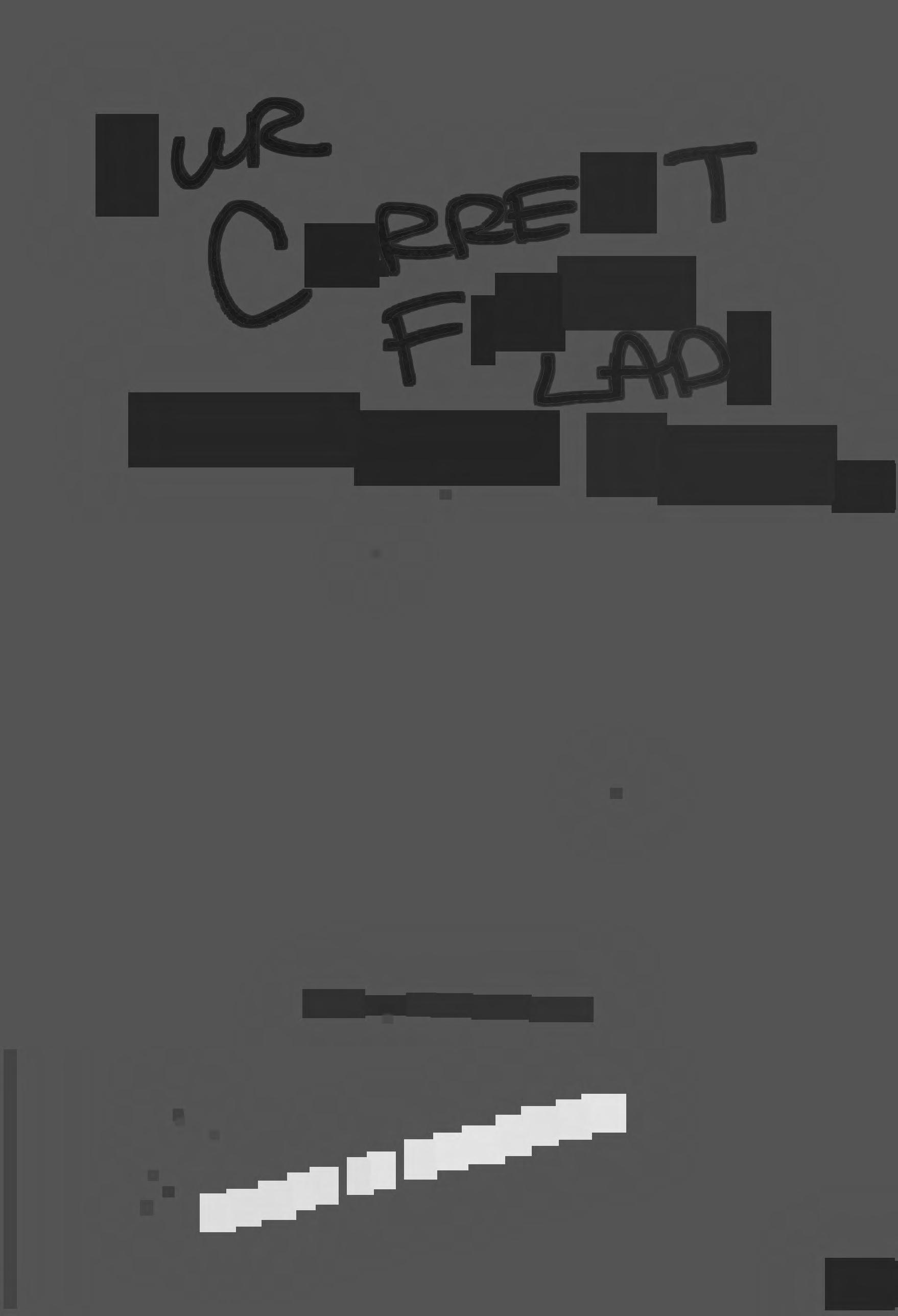



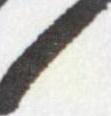


IMonique and the Mango Rains: Two Years with a Midwife in Mali. Kris Hol- loway. Long Grove, IL: Waveland Press, Inc., 2007. 212 pgs.
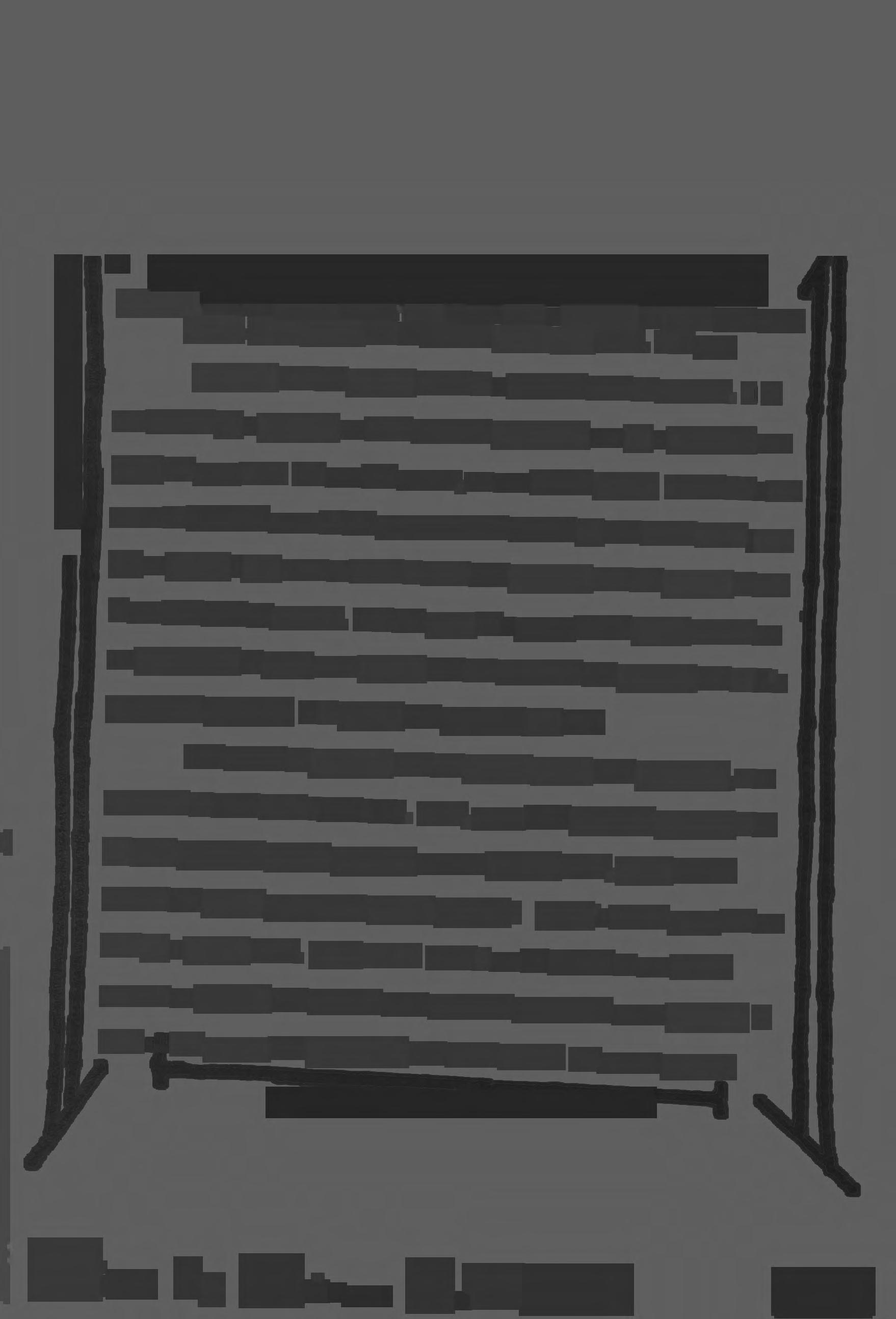

Monique and the Mango Rains is a different kind of memoir. It is not written by a celebrity on their troubled childhood, nor by a politician angling for your vote. No one has cancer, no one knows Oprah. While I do not mean to diminish some of the great memoirs written by and about these people or things, I just want to make it clear that Monique and the Mango Rains is not that kind of memoir. It is the story of a young Peace Corps volunteer on assignment in Mali, west Africa, and the mid-wife she assisted, the title's namesake, Monique. It is simply and naturally just that.
The author of Monique and the Mango Rains, Kris Holloway, was stationed in Mali from 1989-1991. Now, years after Monique working side by side, weighing babies, coaching women through labor, doing chores around the family compound, quietly fighting Monique's unfair wage reduction by a village elder. Wait, what? Aren't we all trained to see African women as helpless and clueless until educated Americans come waltzing in with all the money and knowledge and clean house? Of course poverty


limit's the ability of many women from developing countries, and our own nation as well, to rise above their situations or fight injustices, but Monique is in no way helpless when Holloway arrives in the tiny village ofNapossela.
At age 25, when the book opens, Monique is the is the only midwife and health worker in a rural village of 1400, has three children, and is one of the few villagers who can read and write. As the time rolls by, each little triumph of Monique's fledgling clinic becomes the reader's triumph : babies funded by the patriarchal village among miraculous events.
Thankfully, throughout the text Holloway is very sensitive to "white people's magic", also known as the magic ofmone (Holloway 148). While money always helps a poor situation, wants to stress that doing rather than spending, making relations ·rather than filling out checks, is the best way to really help someone. reiterated throughnity working to make ends meet.

This book isn't only about the clinic, though Monique's identity is distinctly wrapped up in it; the story also follows her past and personal life.




It is announced fairly early on in the book that Monique is a victim of child marriage. Her husband, Francois or as Monique calls him, "the guy", is not interested in supporting the clinic or any of their three children. So Monique often visits a childhood friend in a neighboring city, Pascal. Even in America it is often frowned upon for a woman to have a close relationship with another man beside her husband or brothers. While the dirty details about the nature of Monique's relationship with Pascal are never revealed, it is safe to say that she was taking a huge risk. Why didn't Monique just divorce her disinterested husband? In Mali culture, all children belong to the father and if Monique were to leave Frans;ois she would have to abandon her children as well.

Despite it all, Monique still becomes, for Malian standards, a fairly independent woman . She has a steady income from her work at the clinic, she encourages and teaches other women how to take better care of themselves, their children and their enterprises. Monique and Holloway had an opportunity that contemporary American feminists rarely get a chance to: they implemented their beliefs in a ways that made a real and lasting impact on their community. There is still much work to be done in America, but not on the same life-transforming scale as in a small Malian village. They also have an amazing friendship, something that is rarely portrayed honestly anymore. Women in media are too often stabbing one another in the back or fighting over petty things. Monique and Holloway shared something that








few rarely experience: a cross-culture friendship that actually worked.
Unfortunately, while I thought Monique's story was compelling and \ \ enjoyed learning about the issues that women face in Mali, I thought that , Holloway's voice could have come through more. I realize that her sole ority to this book was to tell Monique's story, but Holloway ' s voice was still the one telling the story. It is just as much her story as it is Monique's.
There are a few instances where Holloway brings up her own opinion and criticism on a situation but it goes just as fast as it comes. After finishing the memoir, I'm not entirely sure I can call it a memoir. The book is focused solely on giving readers facts about the story, mainly Monique's story. If there were even less voice from the author, I'd call for this book to be placed in the biography section. I also wished a family tree of important characters would have been included as an index. With so many people, nearly all of them related, popping in and out of the narrative, I was easily confused on who was who in Napossela.
Overall, though, I would recommend this book for a reader with a global interest. I am currently applying to the Peace Corps and picked up this book as an inside guide of what I could be doing a year or so from now. Though there is not much reflection or criticism in Holloway's prose, there is still a lot of heart. Now I know that "heart" is a word that is often used to



describe bad Hallmark movies, but it's actually true for this book. Something pumps through this story. Could it possibly be ... the promise of human compassion and love? That's a theme almost everyone can get behind.

Monique and the Mango Rains: Two Years with a Midwife in Mali is, all in all, a decent book. The reader can transported to another world in a matter of a few pages, can find a truly likeable and believable protagonist to cheer for, marvel at the ways feminism is so simply and elegantly implemented in a strict patriarchal society and experience a strong friendship between two women. There is so much education to be found here as well. What isn't to be found here, though, is a lot of reflection or criticism within the text. Other, less picky people may be alright with this fact. All in all, Monique and the Mango Rains was an interesting and worthwhile reading experience, and I would suggest the book to anyone who wanted to see outside of their own American eyes.




By Theresa Rebeck


The Scene. Theresa Rebeck. New York, NY; Playscripts, Inc., 2007. Pages 245-291 of Humana Festival 2006-The Complete Plays-30th Anniversary , Edition.




Ms. Rebeck's 2006 entry to the annual Humana Festival in Louisville, Kentucky, The Scene, continues her deliberate trend toward a lofty goal that uniformly plagues the new incarnation of female dramatists-honest dialogue between believable character coping with the contemporary redefinition of gender roles , heterosexual relationships, and a newfound female professional and economic sovereignty. A self-proclaimed feminist with no secrets regarding her leadings, the surprise of her quintessential New York premise is that her protagonist is a man for whom one is handed a heaping plateful of sympathy, and her antagonist is a femme fatale with a limited and confident-but-ridiculous vocabulary who blatantly exploits her own sexuality to get ahead in 'the big city.'

What is delivered as a result is not only a satirical perspective on the entertainment industry and the great lengths to which the willing will wander and shift to dissolve into a functioning and necessary cog in the scenemachine , but also a situational exploration of 'exclusive language' and loyalty within all forms of love where the roles for women are as polarized and
predictable (the 'too competent' and organized, loyal wife and the 'homewrecking' twenty something) as they are truthful; a truth that many feminist authors would be too cowardly to admit or explore.
Charlie is an out ofworkactor, middle-aged, sloppy, articulate, and fourteen years into a marriage with breadwinner and compulsively organized Stella, a woman working hard at a television job that frustrates her in 'the perfect way,' as she clings to the hope of a prospective international adoption, a Chinese baby girl whom she has never met. Louis, Charlie's best friend, accompanies him to a party where he vows to schmooze up scenester scum Nick, a friend from a past life with an alleged pilot, a skinny, sunken face, and expensive black suit. In a deluxe apartment in the sky, Charlie and Louis wax surreal-ities and semantics with a land mine in a very short skirt. Clea is uninhibited, young, oddly insightful, and dangerous. She brutally (but perhaps unintentionally?) shoves Charlie into the realization that the simplest choices (including those left undone), phrases, infidelities, and indiscretions are those that are the most transformative· , even to the point of altering one's perception of air, water and home.
Clea's intention_s could be rightly played as highly devious and calculated or as highly and unfortunately naYve and careless, depending on a



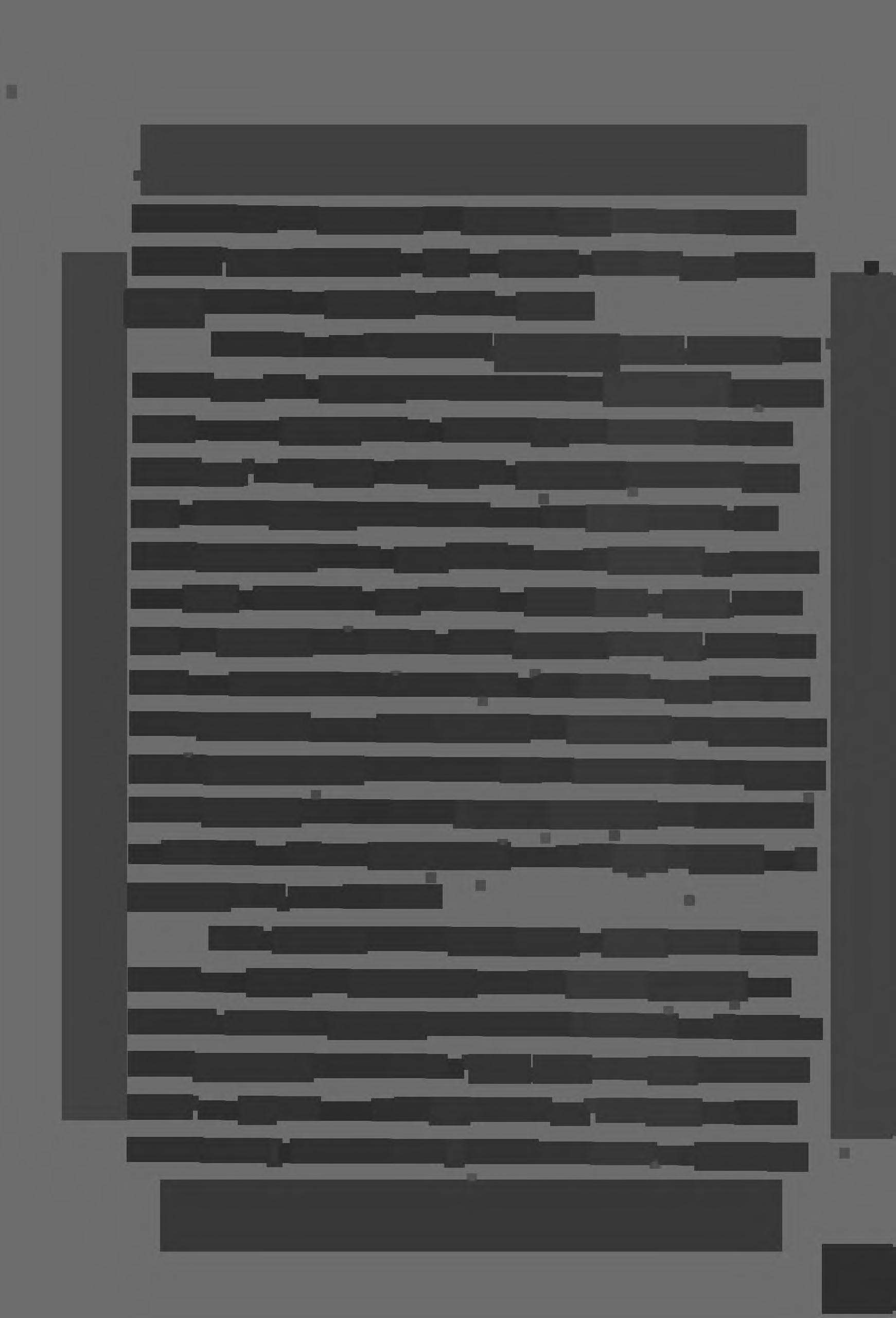
Director's whim. The ambiguity of her character is such that one is unable to decide conclusively whether she is a 'spider, going out to sting a ... delicious \ victim' or a girl who came to the city 'minutes ago' from Ohio, not unlike Rebeck herself ( a Cincinnati native), without street smarts _or a capable city
sensibility-or if, heaven forbid, she is both in equal proportions. Taken out of a Midwestern context, are the Midwestern female manipulations tactics shown for their true colors, hideous against the Manhattan backdrop and resulting from a damaged infrastructure that is, perhaps, asking to be manipulated?
She makes consistent references to aspects of cotemporary scene culture being 'retro', most poignantly in a moment where Charlie claims that she is 'cheating' on him with his 'total nemesis.' Exclusive language, she claims, is outdated. "You were the one who wanted to be clear," she clarifies, reminding Charlie of his initial refusal to abandon his wife. What a startling and empowered move on the part of what initially appears to be a silly girlHow startling for the male protagonist to be falling to pieces, desirous of monogamy, while the female does what is most beneficial for her career by wining and dining a more successful man.




Charlie is a new and subversive spin on the tragic hero. Like the Hamlets and Oedipus of dramatic literature, he is stripped of everything he cares about: his identity as husband, friend, actor, big shot-all as a result of one tragic flaw and a singular, poor decision. He refuses to compromise his time, energy, and identity for a business that he feels to be corrupt and full of 'soul sucking ... mindless ... crap' and skull people, and demands that the

'ability to fuck up' is sacred. Stella's perfection and ability to maneuver difficult situations with ease are said to be the cause of her husband's abandon
ment. I don't need to point out the clear reversal of gender perception again-
here is a man, stuck with a grandiose existential dilemma which he sentimentalizes until his face turns blue, and there is his wife and mistress, standing in awe at his inability to pull himself together and 'say some nice things' to a casting agent or two, to get a job, to maintain a marriage, and to, ironically, become a homogenized, blathering part of 'the scene' that he might disappear in it for a time and relieve the anxiety it brings.
The gait and philosophic nature ofRebeck's voice, at least in the context and style of this particular piece, is correctly placed on the stage.
Although she has written much in the way of screenplays and scripts for television, The Scene is not conductive to film adaptation. Its lengthy monologues and lengthier scene divisions would prescribe severe and unfortunate cuts, presumably at the cost of her outlandish one-liners, and would sacrifice the necessary discomfort that results from the sexuality in live theatre, where even the slightest bit of skin throws audiences into a dither; a stark contrast to the semi-pornographic feats film is able to achieve without one batted eyelash.
The Scene gives voice to a new generation of those anticipating a new move up to the east side, and who want to get there by living creatively and in the moment with permission to make mistakes, and having loved ones to return to. It is a lofty expectation with a high failure rate, and Charlie's dilemma is not the most encouraging ( do not seek after this script if your goal is light reading on a sunny Saturday afternoon-think Willy Loman). It is an outline of a new kind of glitzy, Times Square American which, according to Charlie is 'meaninglessness.'




have-just when the lonely wet cold is settling into your bones, you are uprooted and thrown into a steamy city and the moment you can't another car horn of bead of sweat dripping off your forehead you are dropped back into the icy stillness.
If you are wondering what kind of people you would come across in these places then wonder no more. This novel follows the lives of James Jack and his "tante" Marguerite Deo. Their stories are told from alternating thirdperson points of view. Marguerite's curious death sets off the series of flashbacks that dovetail to compose this book. As the plotlines and characters begin to overlap a tangled web of tragedy is revealed with murder service as the backbone that connects the pasts of these two deeply complex characters .
James Jack's parents were killed in an ice-fishing "accident" when he was only four. He was left with no one other than the woman who he had come to know and love as Tante. Marguerite Deo, a completely indefinable woman with a rich yet shattered past, was finished with everyone. The only joy she needed in life was she would be able to get out of her own lone, drafty old house on a property thoroughly embedded with secrets. She never wanted to come back to this place, but it was all she had-with no one to live for but herself. That is until a woman with a child showed up on her doorstep one day, simply in search of a sitter. Marguerite had never known children and had no desire to, but figured that she might as well welcome into her life the only person who had asked to be welcomed in years. This child that she Jwatch a few nights a week made no judgments-her
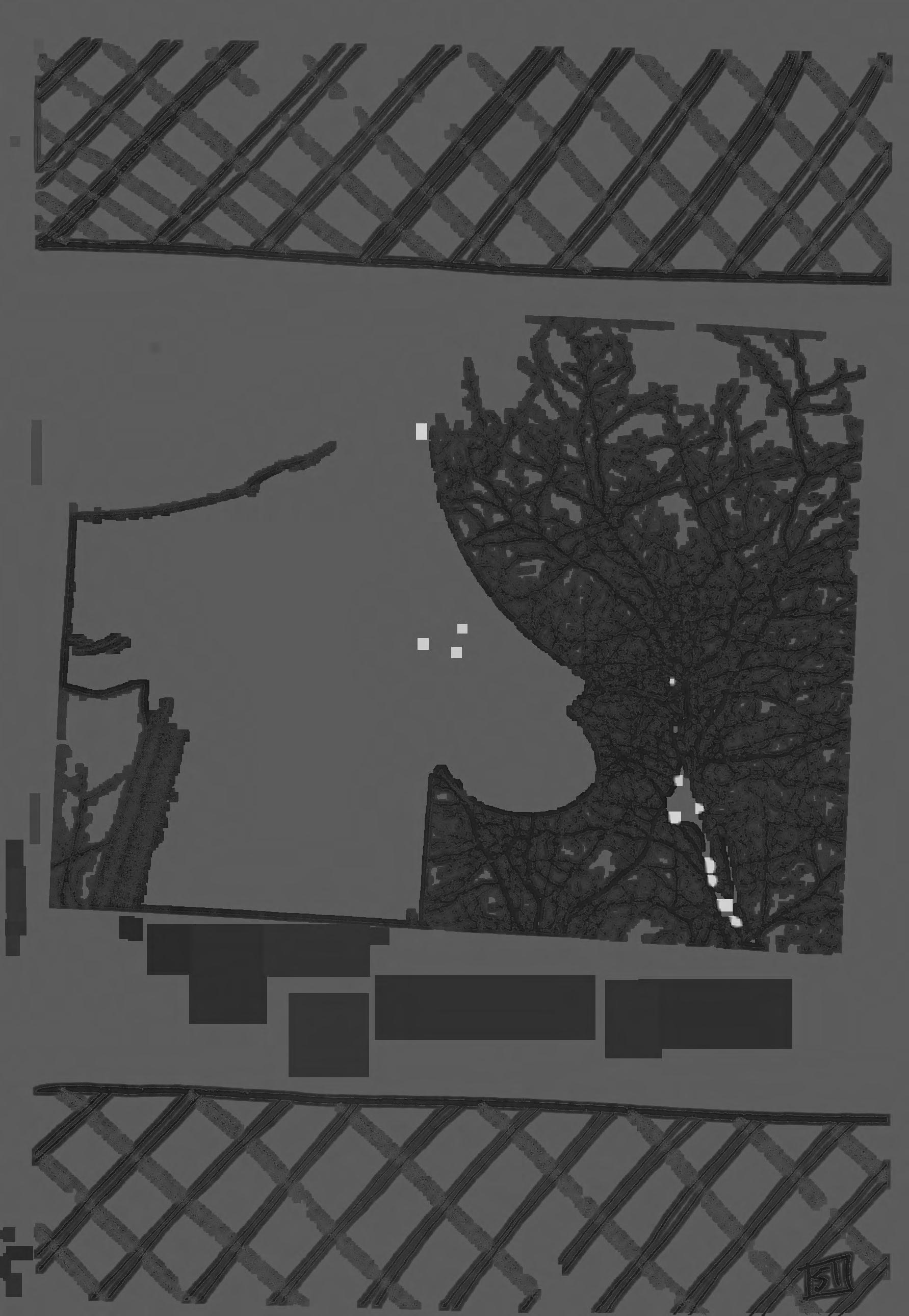


-./ ,- , r'J him. As he began to grow he became her everything, the only person she could ever truly connect with, and when his entire, little world came crashing down she was the only one there to piece everything back together again. Their connection seemed basic and even somewhat fluffy on the outside, but nothing that others could see would ever be able to explain the real secrets that cinched them together within s many embedded and labyrinthine layers.
The waters become increasingly middy as more and more questions form in you head-and you just can't stop turning pages . What happened to Marguerite's little finger on her left hand? Is she really as lesbian or did she really truly love that man? Why did she leave Grain Island-never to return until her parents' deaths? Does James have an inability to really, truly love any woman other than Tante? Or is it simply because Faith is married? And what is he up to-what was Marguerite's final wish? I promise you won't be disappointed; you will close this book with your chin on the floor.
This novel is for someone who wants to feel adventure, intrigue and intense emotion all while sitting still, or for someone who wants to go places far away without having to buy a plane ticket. This novel is all-consuming, agonizing, vivid, piercing and profound. You will never feel more satisfied than when you are reading this novel. It is quick-perfect for a weekend or a vacation, or even to curl up with on a rainy day. Be warned that you will take it with you, inside you, wherever you go. It is always on your mind and will stay with you forever. You will see you own world differently and you will have a constant wandering, wondering eye .. .l felt more captivated and





fascinated with human life after reading this novel than I had ever felt before. Just when you have lost all faith in the seemingly bland human race, this story reminds you that everyone has secrets and everyone has a fire burning inside of them for something-and that something is usually very hidden and mysterious.
Everyone has a story, every place has a story-everyone is interesting, everywhere is interesting, but nothing is as it seems on the surface. It's amazing what turns up when you start digging. This novel will never let you forget that. I highly recommend Burning Marguerite for anyone who isn't afraid to face the riveting, seductive layers of life ... enjoy ...



